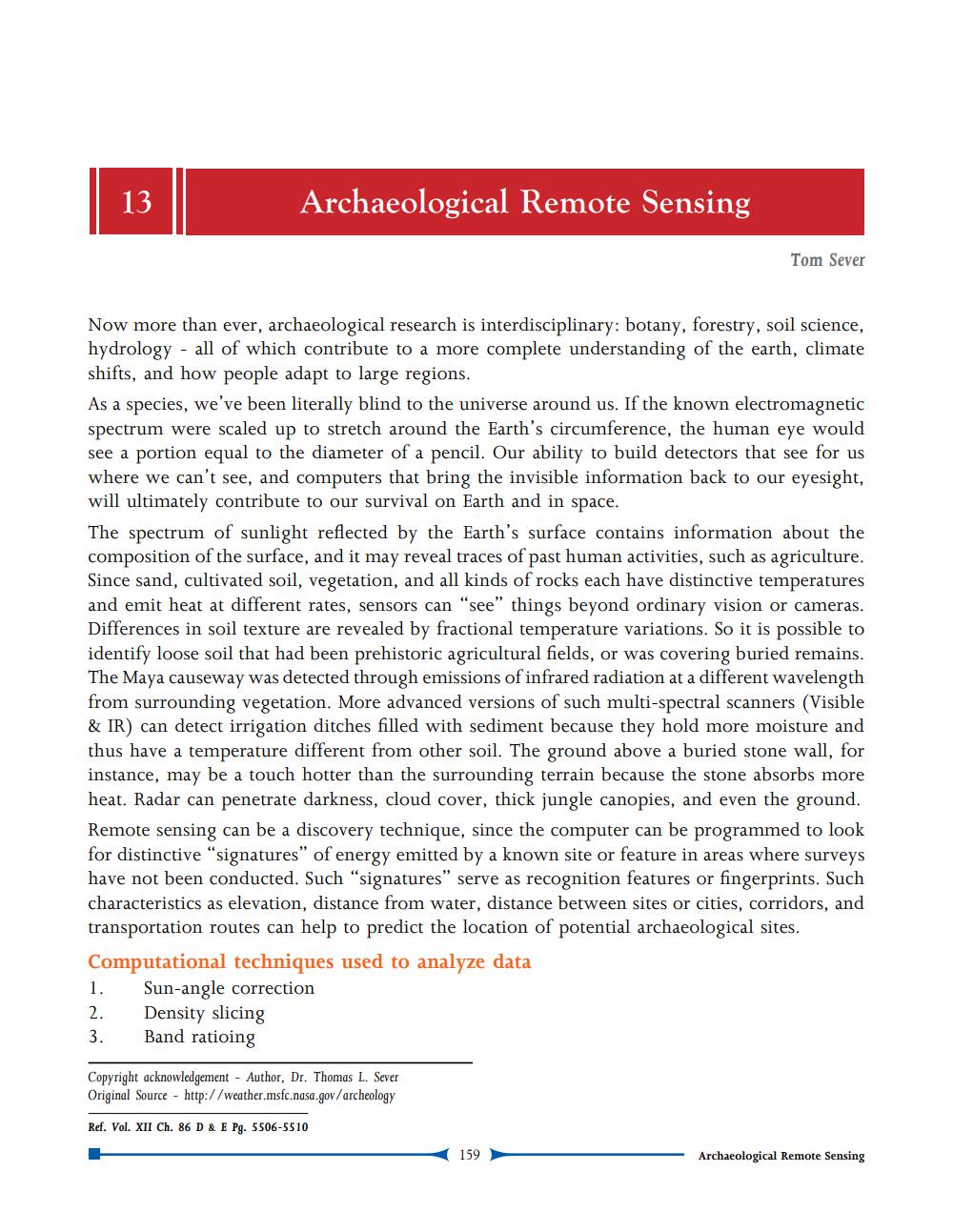________________
Archaeological Remote Sensing
Tom Sever
Now more than ever, archaeological research is interdisciplinary: botany, forestry, soil science, hydrology - all of which contribute to a more complete understanding of the earth, climate shifts, and how people adapt to large regions. As a species, we've been literally blind to the universe around us. If the known electromagnetic spectrum were scaled up to stretch around the Earth's circumference, the human eye would see a portion equal to the diameter of a pencil. Our ability to build detectors that see for us where we can't see, and computers that bring the invisible information back to our eyesight, will ultimately contribute to our survival on Earth and in space. The spectrum of sunlight reflected by the Earth's surface contains information about the composition of the surface, and it may reveal traces of past human activities, such as agriculture. Since sand, cultivated soil, vegetation, and all kinds of rocks each have distinctive temperatures and emit heat at different rates, sensors can see things beyond ordinary vision or cameras. Differences in soil texture are revealed by fractional temperature variations. So it is possible to identify loose soil that had been prehistoric agricultural fields, or was covering buried remains. The Maya causeway was detected through emissions of infrared radiation at a different wavelength from surrounding vegetation. More advanced versions of such multi-spectral scanners (Visible & IR) can detect irrigation ditches filled with sediment because they hold more moisture and thus have a temperature different from other soil. The ground above a buried stone wall, for instance, may be a touch hotter than the surrounding terrain because the stone absorbs more heat. Radar can penetrate darkness, cloud cover, thick jungle canopies, and even the ground. Remote sensing can be a discovery technique, since the computer can be programmed to look for distinctive "signatures" of energy emitted by a known site or feature in areas where surveys have not been conducted. Such "signatures” serve as recognition features or fingerprints. Such characteristics as elevation, distance from water, distance between sites or cities, corridors, and transportation routes can help to predict the location of potential archaeological sites. Computational techniques used to analyze data 1. Sun-angle correction 2. Density slicing 3. Band ratioing
Copyright acknowledgement - Author, Dr. Thomas L. Sever Original Source - http://weather.msfc.nasa.gov/archeology
Ref. Vol. XII Ch. 86 D & E Pg. 5506-5510
159
Archaeological Remote Sensing




